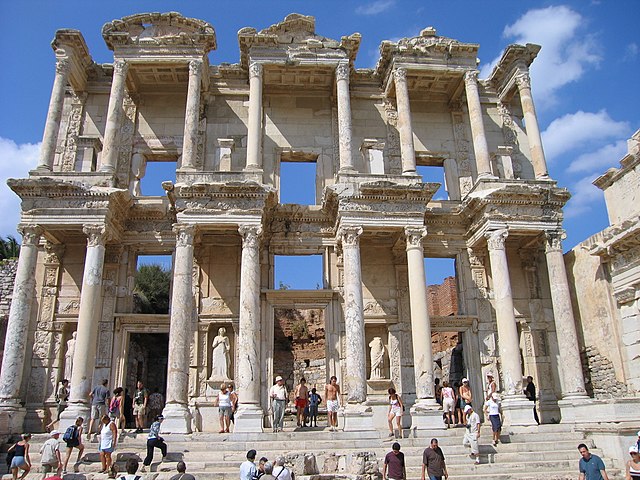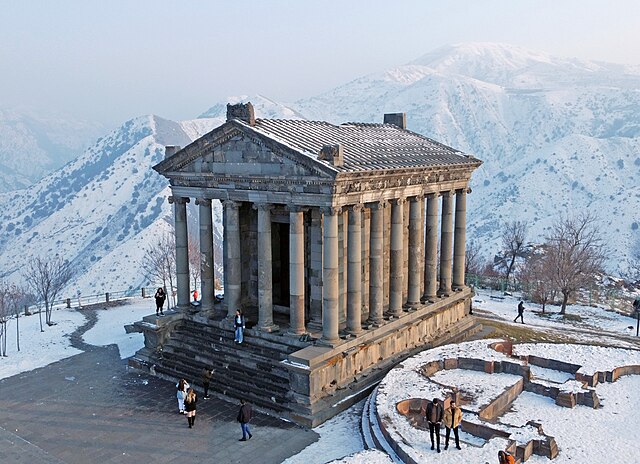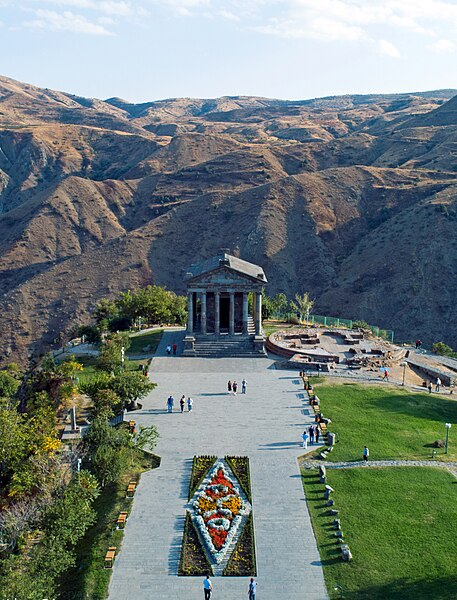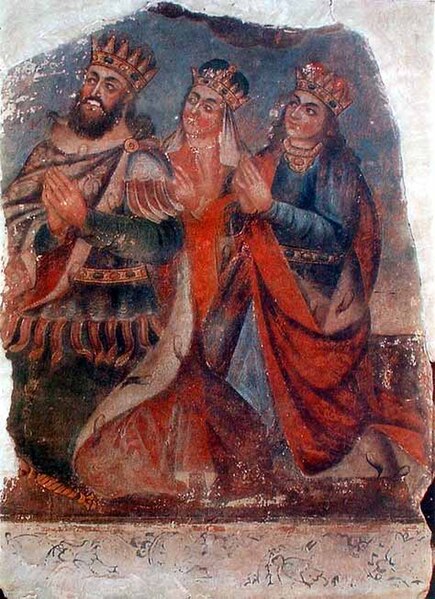Anastylosis is an architectural conservation term for a reconstruction technique whereby a ruined building or monument is restored using the original architectural elements to the greatest degree possible, combined with modern materials if necessary, ensuring that the latter are unobtrusive while clearly recognizable as replacement materials. It is also sometimes used to refer to a similar technique for restoring broken pottery and other small objects.
Celsus Library in Ephesus (Turkey), anastylosis carried out 1970–1978
Anastylosis in Temple of Garni, Armenia
Anastylosis in Knossos palace, Crete, Greece, by Sir Arthur Evans
A monumental gateway Tetrapylon (built 200 AD), Aphrodisias, Turkey
The Garni Temple is the only standing Greco-Roman colonnaded building in Armenia. Built in the Ionic order, it is located in the village of Garni, in central Armenia, around 30 km (19 mi) east of Yerevan. It is the best-known structure and symbol of pre-Christian Armenia. It has been described as the "easternmost building of the Graeco-Roman world" and the only extant Greco-Roman temple in the former Soviet Union.
The temple in 2021
An aerial view
A painting of Tiridates III, his consort Ashkhen, and his sister Khosrovidukht by Naghash Hovnatan, early 1700s
The ruins in the early 20th century (published in 1918)








